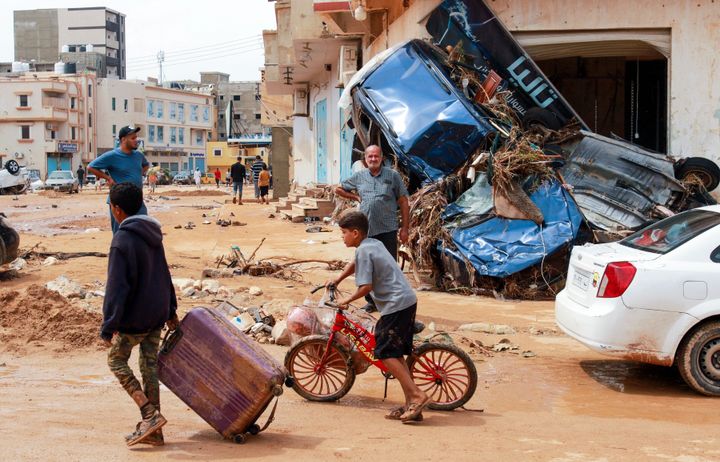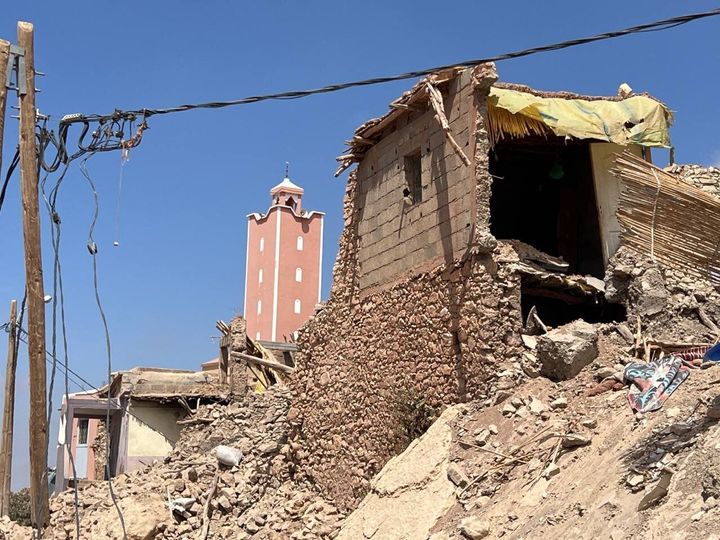
On Tuesday, Libya declared an emergency after Storm Daniel killed at least 2,000 people, while a further 10,000 are missing.
And late last Friday, a magnitude 6.8 earthquake hit the Moroccan capital of Marrakesh, killing more than 2,600 people and injuring more than 2,500.
The UK has offered direct aid to help the crisis on the ground – but is it enough? No, not according to a specialist in international refugee law.
So what is the UK currently doing to help?
In Morocco, the UK international search and rescue team are on the ground, helping rescue efforts, including in two areas in the Atlas Mountains.
They are helping to search for survivors in collapsed buildings and offering a medical assessment team to help co-ordinate a response within the health system.
In a press release from Sunday, the government said it had sent 60 search and rescue specialists, four search dogs and rescue equipment, as well as two Royal Air Force aircrafts.
The equipment includes devices to cut through concrete and remove rubble to reach people potentially trapped underneath collapsed structures.
Defence secretary Grant Shapps also claimed that the UK “has taken a leading role in the international effort to enhance search and rescue operations – moving quickly to deploy our unique strategic airlift capabilities, expert personnel and aid” with Morocco.

The government has not yet announced a coordinated response to the crisis emerging in Libya.
What else does the UK need to do?
Daniel Sohege, director for human rights advocacy group, Stand For All and international refugee law specialist, explained on X (formerly Twitter), that the UK needs to open its doors to these climate migrants.
He posted: “Libya, Morocco, so much devastation and so many lives lost. [The] reality is it will take more than just direct aid to help.
“The EU, UK et al are going to need to be prepared to provide safety for those forced to leave their countries by these disasters.”
In fact, this week – on September 14 – the government will be asked by Lord Harries of Pentregarth “what consultations they are having with European and other partners on how best to manage the likely migration as a result of climate change”.
There are other alternatives too, including local investment to help protect land threatened by environment changes.
The Dutch research project, Salt Solution and local NGOs teach farmers in Bangladesh how to grow salt-tolerant crops after cyclones caused floods and filled farms with salt.
However, that requires long-term investment.
A breakthrough agreement at COP27 last year saw a “loss and damage” fund set up for vulnerable countries hit by the crisis, but the details of it have not yet been hashed out.
In the meantime, migration is the primary option for many people who have lost their homes.
The UN’s refugee agency, UNHCR, previously claimed that there was an annual average of 21.5 million people who were forcibly displaced each year by events linked to extreme weather – and that was just between 2008 and 2016.
This is anticipated to increase in the coming years, as the climate crisis deepens.
The International think tank the IEP has predicted that 1.2 billion could be displaced around the world by 2050 due to climate change and natural disasters.
Around a third of people born outside of the UK but now living here have come from countries in the top quartile of climate vulnerability.
That means there are around 3.06 million people who came to the UK after being born in a place threatened by extreme weather, according to PreventionWeb, managed by the UN Office for Disaster Risk Reduction.
Even those who leave their home countries because of other issues, such as an uptick in violence, were usually impacted by the climate.
The UNHCR’s report, Global Trends in Forced Displacement 2020, found 95% of all conflict displacements that year happened in countries vulnerable to climate change, too.
And, as the major economies of the world produce the most carbon emissions, which cause the climate crisis, which causes climate migration – it makes sense that the UK welcomes those looking for refuge.
As the greenly.Institute suggests, climate visas could be an option. It would allow refuge in the UK temporarily, if people were then able to return to their home country, or permanently, if their home has become permanently inhospitable.
Instead, the UK is cracking down on refugees, and has significantly fewer migrants coming to the country compared to European neighbours like France and Germany.
